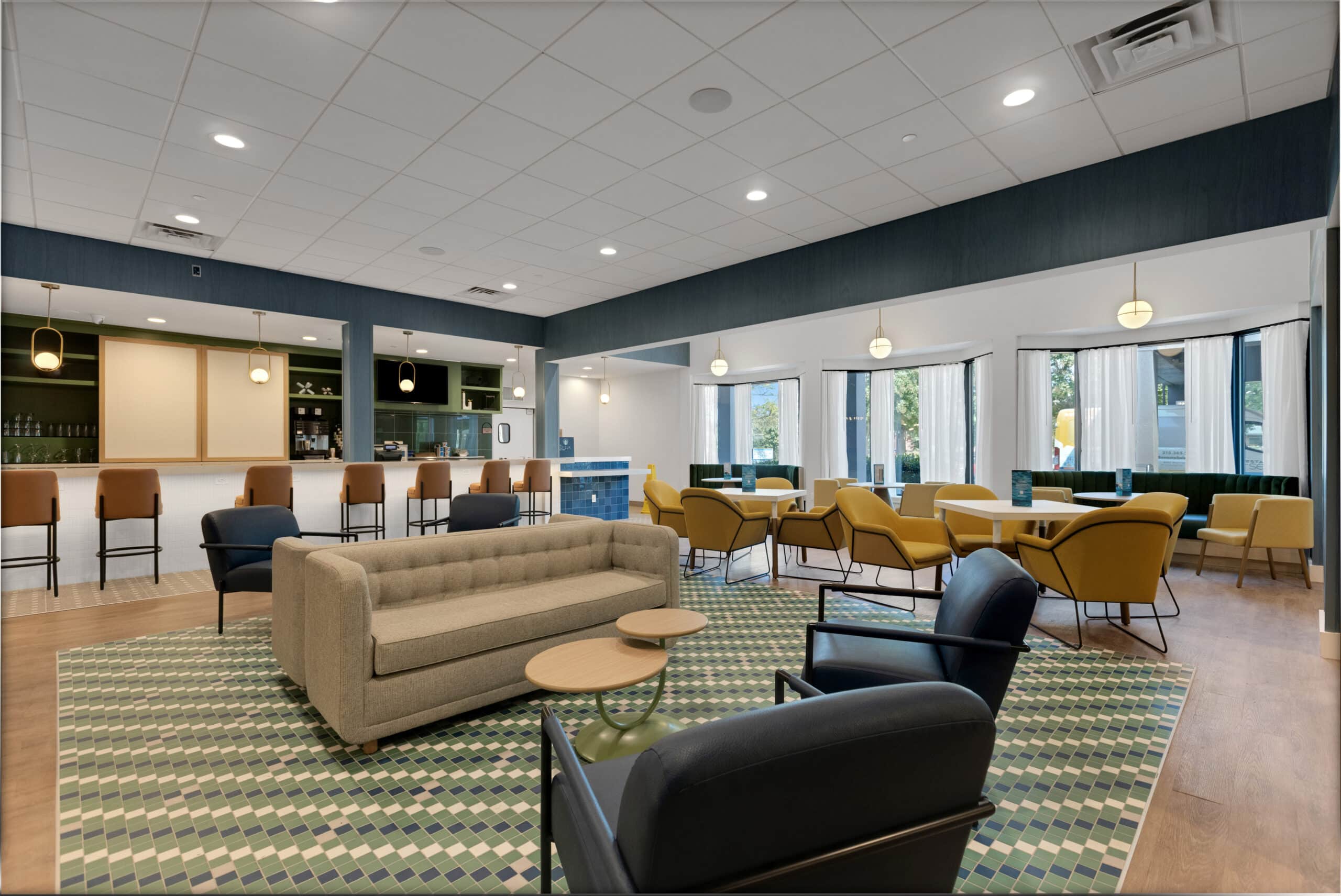When it comes to hotel photography, snapping attractive pictures requires more than just a good eye. It’s about telling a story, one that invites potential guests to step into a world of comfort and luxury.
The task demands an appreciation for the space’s commercial appeal, meticulous preparation, and a mastery of the technical aspects of real estate photography.
Preparing for the Perfect Shot: The Importance of Staging
Before the photographer even sets foot on the property, communication with the hotel staff is crucial. A well-staged hotel not only photographs better but also ensures that each space looks its absolute best. Here are a few ways hotel staff can prepare for the photoshoot:
- Tidy Up: Ensure all areas are clean, with no clutter or personal items in view.
- Attention to Detail: Small touches like perfectly arranged cushions, neatly folded towels, and an absence of fingerprints on reflective surfaces can make a huge difference.
- Ambiance: Set the mood with appropriate lighting. Make sure all the light bulbs work and are of the same temperature.
- Set the Scene: Stage the dining areas by setting tables neatly, perhaps with a bottle of wine to suggest an elegant dining experience.
With these preparations made in advance, the photographer can focus on framing the perfect shot, rather than managing the minutiae of the scene.
The Art of Hotel Photography: Key Considerations
Commercial Appeal and Brand Representation
Hotel photography should always keep the end goal in sight: to entice guests. Every shot must weave into the narrative of the hotel’s unique story and brand image. Whether it’s the grandeur of the lobby or the intimate charm of a guest room, the pictures should resonate with the hotel’s identity.
Technique and Composition
Leveraging wide-angle lenses helps in capturing the grandiosity of spacious hotel lobbies or the expansive views from a suite. Meanwhile, a good macro lens will help you zoom in on the intricate details that define luxury — the texture of the linen, the craftsmanship of the decor, or the quality of the in-room amenities.
Proper lighting is another cornerstone. Photographers must balance natural and artificial light to avoid unwanted shadows or color casts, ensuring the hotel feels warm and welcoming.
Diverse Facilities and Room Varieties
Hotels are ecosystems unto themselves, often featuring pools, restaurants, and conference spaces. Photographing these diverse amenities necessitates a versatile approach, adjusting the technique to suit the story being told by each space.
Post-Production Excellence
Post-production is where good photos become great, ensuring consistency with the hotel’s branding and the realistic representation of the hotel’s ambiance. Attention to detail in editing is critical in creating the flawless imagery expected in hotel marketing.
Extending the View: The Impact of Drone Photography
To truly set a hotel apart, show its context within its surroundings. Drone photography can capture the hotel’s architecture and grounds in relation to the neighborhood and nearby attractions. Proximity to beaches, landmarks, or downtown areas can be significant selling points that are best portrayed from above.
Hotel Photography by HomeJab: Nationwide Service, Professional Quality
With HomeJab, excellence in hotel photography is just a click away. As a nationwide real estate photography company, we specialize in serving the entire hospitality industry with unparalleled professionalism.
Our team understands the nuances of capturing the inviting essence of your hotel. From the grandeur of spacious lobbies to the intimate details of guest amenities, we bring the narrative of your hotel to life. And when time is of the essence, HomeJab stands out by offering the convenience of scheduling a professional photographer within just 24 hours.
Transform your hotel’s online presence with the compelling imagery that HomeJab can provide – because in the world of hospitality, good photography means more bookings.
















